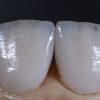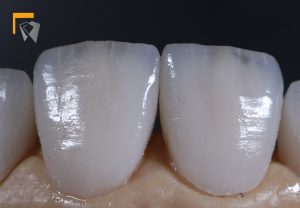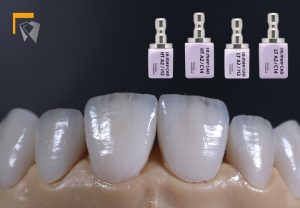The introduction of nanotechnology within dentistry has transformed the material we now use and brought a refreshing new twist on some well-known classic materials from the past. Aside from the brand new cutting edge materials such as PEEK and zirconia, one of the most talked about now within the lab scene and due to its versatility is composite, or more specifically nano-composite.
Here at Howlite we can’t sing the praises of this reengineered nano-composite more highly. They’re malleable nature means they are easy to work with in a variety of ways, and unlike porcelain we can see instant shade results, meaning less complications and unpredictable outcomes. One of the hidden secrets in these nanocomposites is the integration of ceramic and zirconia nanoparticles. These particles both provide strength and stability to the composite giving a hardness close to ceramic, but also can provide opalescence to aid shade matching, mimicking natural surrounding dentition.
Due to the high bond strength, Howlite’s composite can be used for additions to a wide range of materials including metal, ceramic, acrylic and zirconia.
Alongside this remarkable material our team of Howlite dental technicians have been trained to design substructures with specific tolerances aimed to support retention requirements and aesthetics once built and finished with the final composite layering.
An often overlooked area of use for this material is within implantology. Traditionally many people have had a preference to finish final implant restorations with porcelain, choosing bonded PFM’s, assuming that the strength from metal and aesthetics from the porcelain will give the best balance between these two requirements. While this might have been the case in the past, with this new era of nanocomposites, we are now seeing a rise in nanocomposite finished implant restorations. We believe that the recent rise in this trend stems from cutting edge laboratories such as Howlite Dental capitalising on the material properties of nanocomposite. By utilising it’s strengths, specifically its lifespan or longevity, varying levels of light opacity and possibly most importantly is compressive/flexural properties, we are able to build directly onto the implant abutment, providing a highly aesthetic restoration that stands the test of time, but has an inbuilt shock absorbing property. This often overlooked or hidden feature of modern nanocomposite is the perfect companion when it comes to implant restorations as it reduces the occlusal forces transmitted through the implant, which would otherwise be passed down into the bone from reoccurring occlusal contact in mastication or accidental sudden impact.
Time will only tell on the future of this material as we are still within it’s infancy, but as more developments are made I’m sure we will have an exciting future ahead with many more applications for this wonderful new material in the laboratory toolbox.



